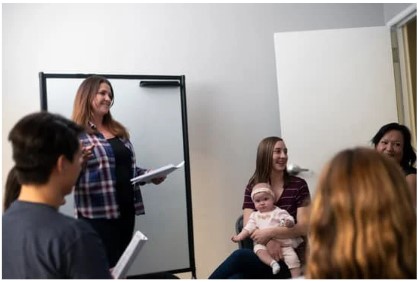Neighborhood Safety Meeting
Organizing a neighborhood safety meeting is a great way to bring your community together to strengthen security and support crime prevention. Whether you’re part of a neighborhood watch program or want to make your neighborhood safer, you can create a space where local citizens can discuss safety concerns and work together. By getting involved, you’ll be helping to make your neighborhood a safer place in your country. To start, reach out to your local police office and invite your neighbors to join in this important effort
1. Plan the Meeting
Begin by contacting your neighbors and the local police department. Let them know you’re organizing a neighborhood watch or crime prevention meeting. It is a great way to bring your community together and focus on neighborhood safety. Choose a time and place that works for most people. A park or community center is ideal for creating a welcoming atmosphere.
Consider inviting local businesses to participate as well since they play a key role in keeping the neighborhood safe. Remember, neighborhood safety is a team effort, so encourage everyone to join and contribute to the success of your neighborhood watch program. Working together as a community makes it easier to protect your neighborhood.
2. Create an Agenda
An organized agenda helps keep the meeting on track. You can discuss topics like recent criminal activity in your area, crime watch practices, and effective reporting procedures. Consider inviting a representative from the local policing office to provide relevant information and offer recommendations for strengthening community safety.
It’s also a good idea to invite local business owners to share their perspectives, as they can assist in keeping the area secure. During the meeting, you can also hear from residents about any concerns or experiences with violence in the neighborhood. This gives everyone a chance to meet and work together on solutions to improve safety for the entire community.
3. Discuss Safety Strategies
During the meeting, review neighborhood watch programs and security tips that are effective in other communities. This is a great opportunity to build trust and collaboration among residents. Talk about neighborhood watch practices like keeping an eye out for suspicious activities, improving home security, and setting up a system for reporting any concerns. Holding regular meetings helps keep everyone informed and ensures that all citizens are involved in protecting their neighborhood.
You can also discuss designs for neighborhood watch signs or flyers to remind everyone to stay vigilant and report anything unusual. Working together as a community strengthens the bond among citizens and makes your neighborhood a safer place for everyone.
4. Follow Up
After the meeting, send out a summary of what was discussed to all residents. This should include the main points, recommendations, and any action items that were agreed upon. Make sure to follow up on any concerns raised and keep the group organized by planning regular neighborhood watch meetings. Regular communication is key to ensuring that everyone in the neighborhood stays informed and engaged in the programs. This ongoing collaboration will help maintain safety and prevent crime in your neighborhood.
By keeping neighborhood watch programs active, you can also reduce the chances of violence and create a safer environment for everyone. Encourage communities to share success stories from their neighborhoods to inspire others and strengthen the overall neighborhood watch effort. Regular updates and meetings will keep the momentum going and ensure that the program continues to protect your neighborhood effectively.
5. Stay Connected
Consider creating a site or online group where neighbors can easily share updates and information about the neighborhood. This could serve as a hub for discussion and support as your neighborhood watch program grows. Staying connected will help keep everyone informed and ready to act in case of any illegal activity.
By taking these steps, you’ll be playing a crucial role in making your neighborhood a safer place for everyone. Organizing a neighborhood safety meeting is just the first step towards a safer community. Start today and see how your efforts can make a real difference in the quality of life in your area.
6. Involve Local Businesses
Engage local businesses in your neighborhood watch efforts. They can be valuable partners in keeping an eye on illegal activity and may provide security resources or sponsor safety-related events. Businesses often have security systems in place that can assist in crime prevention by monitoring the area.
During your meetings, discuss how businesses can contribute, such as by sharing security footage or offering discounts on safety equipment that residents might want to purchase. Their involvement can also help deter violence and make your neighborhood a safer place. Collaborating with local businesses strengthens the overall neighborhood watch and brings more resources to protect your neighborhood.
7. Establish a Communication Network
Create a communication network, such as a group chat or email list, where neighbors can quickly share updates about safety concerns or suspicious activities. This process helps ensure that everyone is informed in real time and can respond swiftly to potential threats. It also gives you the opportunity to stay connected with your neighborhood watch group and make sure everyone is on the same page.
Once you’ve started this network, establish a policy for how information should be shared and what steps to take if something concerning comes up. By working together and staying organized, you can make this communication network a powerful tool in keeping your neighborhood safe.
8. Review Crime Statistics
Before your meeting, gather local crime statistics from the police department or city justice office. Reviewing this information will help you understand the most common threats in your neighborhood and focus your discussion on the most relevant safety measures. Make sure to take note of any patterns or trends that might be affecting specific neighborhoods in your city.
This data will give you a clear picture of what needs to be addressed during the meeting. You might even want to prepare a few key items to discuss at length, such as areas with higher rates of illegal activity or specific fields where safety improvements are needed. Having this information ready will ensure your neighborhood meeting is productive and focused on the right issues.
9. Assign Roles
To keep the neighborhood watch program effective, assign specific roles to residents. For example, designate someone to be the primary contact with the police, another to manage the communication network, and others to monitor different areas of the neighborhood. You might also assign someone to handle updates and reminders for meetings or events. Having clear roles helps everyone know their responsibilities and makes the program run more smoothly.
Regularly check in to make sure everyone is fulfilling their roles and to address any issues. Working together and sticking to these roles will make your neighborhood watch more organized and effective in keeping your neighborhood safe.
10. Organize Regular Patrols
Encourage volunteers to participate in regular patrols of the neighborhood. These patrols can be informal but should be organized and consistent. Having neighbors take turns walking or driving around the area helps keep a visible presence and can make potential criminals think twice before committing a crime. You can set up a schedule so everyone knows when their patrol time is and make sure to check in regularly to see how things are going. These patrols also give residents a chance to meet each other and strengthen the community bond. By working together and staying active, you’ll help keep your neighborhood safer and more connected.
11. Focus on Youth Engagement
Involve younger citizens in your neighborhood watch efforts. They can bring fresh ideas and energy to the program. Plus, engaging teens helps them learn about safety and crime prevention early on, which benefits the entire community. Please encourage them to help organize events, spread the word about the program, or participate in patrols.
They might find new ways to use social media or technology to keep everyone informed. Involving them fosters a sense of responsibility and ensures the neighborhood watch stays active and relevant for all ages.
12. Evaluate and Improve
After each meeting and over time, evaluate the effectiveness of your neighborhood watch program. Gather feedback from residents and police to see what’s working and where improvements can be made. Continuous improvement ensures that your community remains vigilant and safe.
By incorporating these additional points, your neighborhood safety meeting will be more comprehensive, providing your community with the tools and strategies needed to prevent crime and maintain a high quality of life effectively.






